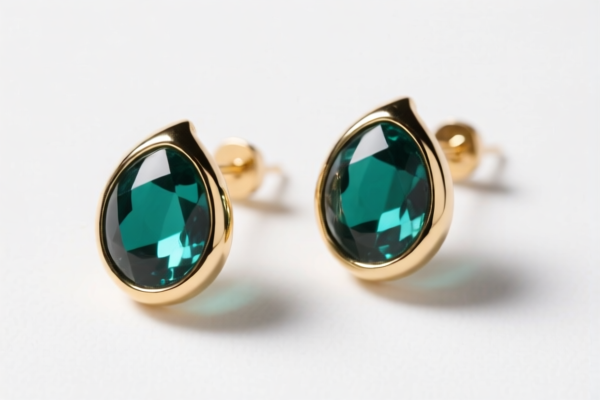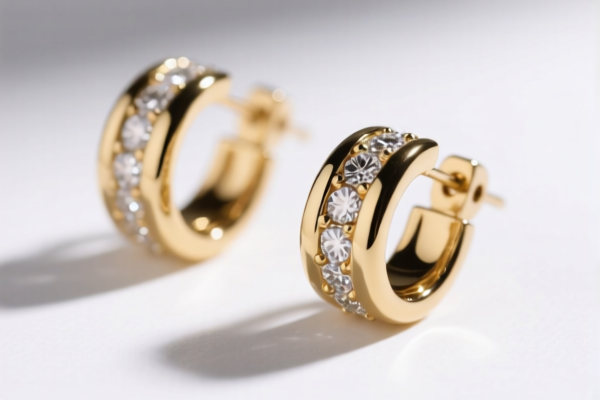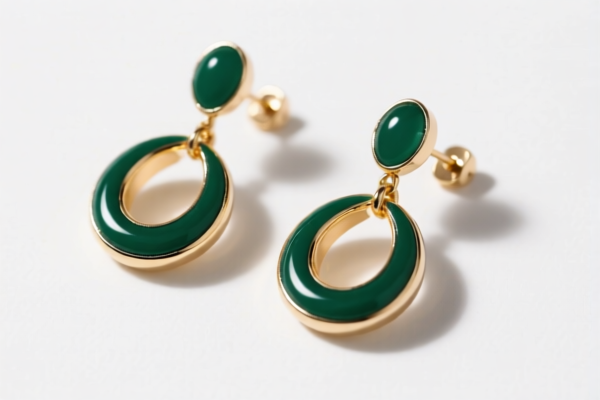| HS Code | Official Doc | Tariff Rate | Origin | Destination | Effective Date |
|---|---|---|---|---|---|
| 7113195030 | Doc | 43.0% | CN | US | 2025-05-12 |
| 7115906000 | Doc | 59.0% | CN | US | 2025-05-12 |
| 7115903000 | Doc | 58.9% | CN | US | 2025-05-12 |
| 9111907000 | Doc | 43.9% | CN | US | 2025-05-12 |
| 9111905000 | Doc | 1.6¢ each + 6.8%+37.5% | CN | US | 2025-05-12 |




Earring Holes
Earring holes, also known as piercings, are punctures in the earlobe or other parts of the ear created for the purpose of wearing earrings. They represent a form of body modification with a long and diverse history across cultures.
History and Cultural Significance
The practice of ear piercing dates back millennia, with evidence found in ancient civilizations. Historically, ear ornamentation signified status, religious affiliation, or rites of passage. Modern ear piercing is largely a fashion statement, though cultural and personal meaning often remain.
Anatomy
The most common location for piercing is the earlobe, which contains soft tissue and is relatively easy to pierce. Other areas of the ear suitable for piercing include the helix (outer cartilage rim), tragus (small flap in front of the ear canal), conch (inner cartilage bowl), rook, daith, and industrial (connecting two points of cartilage). Cartilage piercings generally require more specialized techniques and have longer healing times than lobe piercings.
Materials and Techniques
- Piercing Instruments: Traditionally, piercing was performed with needles. Modern methods include needle piercing and piercing guns. Needle piercing is generally considered safer and more precise.
- Metals: Common metals used for initial piercings include surgical stainless steel, titanium, and niobium. These materials are hypoallergenic and less likely to cause allergic reactions. Gold (14k or higher) is also used, but purity is important to avoid allergic reactions from alloys.
- Aftercare: Proper aftercare is crucial to prevent infection. This typically involves cleaning the piercing site with saline solution multiple times a day.
Types of Ear Piercings
- Lobe: The most common type, pierced through the fleshy lower part of the ear.
- Helix: Pierced through the upper outer cartilage.
- Forward Helix: Pierced through the upper forward cartilage.
- Tragus: Pierced through the small flap of cartilage in front of the ear canal.
- Conch: Pierced through the inner cartilage bowl of the ear.
- Rook: Pierced through the inner cartilage ridge above the tragus.
- Daith: Pierced through the innermost cartilage fold.
- Industrial: A single piece of jewelry connecting two points of the upper cartilage.
- Cartilage: A general term for piercings in any part of the ear cartilage (excluding the lobe).
Usage Scenarios & Jewelry
Earring holes are used to display a variety of jewelry, including:
- Studs: Small, simple earrings that sit flush against the earlobe.
- Hoops: Circular earrings that pass through the piercing.
- Dangles: Earrings with a chain or other element that hangs below the earlobe.
- Huggie Hoops: Small hoops that "hug" the earlobe.
- Plugs/Gauges: Used for stretched earlobe piercings.
Risks & Considerations
- Infection: The most common risk, requiring medical attention if severe.
- Allergic Reaction: Can occur from certain metals.
- Keloid Formation: Scar tissue overgrowth.
- Tearing/Migration: Can occur with improper jewelry or trauma.
- Pain: Varies depending on the location and individual pain tolerance.
Professional piercing is recommended to minimize risks. Aftercare instructions should be followed diligently.
Based on the provided information, the declared goods "earrings hole" can be interpreted as earrings, which fall under the category of jewelry and parts thereof. Here are the relevant HS codes:
- 7113195030: This HS code covers articles of jewelry and parts thereof, of precious metal or of metal clad with precious metal; specifically, of precious metal, whether or not plated or clad with precious metal; other; other of ISO standard platinum; earrings. The total tax rate is 43.0%, comprised of a 5.5% base tariff and a 7.5% additional tariff, increasing to 30.0% after April 2, 2025.
- 9601908000: This HS code covers worked ivory, bone, tortoise-shell, horn, antlers, coral, mother-of-pearl and other animal carving material, and articles of these materials (including articles obtained by molding); other; other. The total tax rate is 41.2%, consisting of a 3.7% base tariff and a 7.5% additional tariff, rising to 30.0% after April 2, 2025. This code may be applicable if the earrings are made from these materials.
- 9601906000: This HS code covers worked ivory, bone, tortoise-shell, horn, antlers, coral, mother-of-pearl and other animal carving material, and articles of these materials (including articles obtained by molding); other; of bone, horn, hoof, whalebone, quill or any combination thereof. The total tax rate is 37.5%, with a 0.0% base tariff and a 7.5% additional tariff, increasing to 30.0% after April 2, 2025. This code applies specifically to earrings made from bone, horn, or similar materials.
Important Note:
Regarding HS codes 9601908000 and 9601906000, please verify the material composition of the earrings. If they are made from ivory, bone, tortoise-shell, horn, antlers, coral, or mother-of-pearl, these codes may be applicable.
Customer Reviews
No reviews yet.